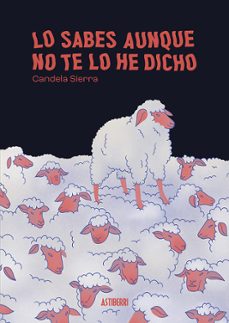Imprescindibles
Ficción
No Ficción
Ciencias y tecnología Biología Ciencias Ciencias naturales Divulgación científica Informática Ingeniería Matemáticas Medicina Salud y dietas Filología Biblioteconomía Estudios filológicos Estudios lingüísticos Estudios literarios Historia y crítica de la Literatura
Humanidades Autoayuda y espiritualidad Ciencias humanas Derecho Economía y Empresa Psicología y Pedagogía Filosofía Sociología Historia Arqueología Biografías Historia de España Historia Universal Historia por países
Infantil
Juvenil
#Jóvenes lectores Narrativa juvenil Clásicos adaptados Libros Wattpad Libros Booktok Libros de influencers Libros de Youtubers Libros Spicy Juveniles Libros LGTBIQ+ Temas sociales Libros ciencia ficción Libros de acción y aventura Cómic y manga juvenil Cómic juvenil Manga Shonen Manga Shojo Autores destacados Jennifer L. Armentrout Eloy Moreno Nerea Llanes Hannah Nicole Maehrer
Libros de fantasía Cozy Fantasy Dark academia Hadas y Fae Romantasy Royal Fantasy Urban Fantasy Vampiros y hombres lobo Otros Misterio y terror Cozy mistery Policiaca Spooky Terror Thriller y suspense Otros
Libros románticos y de amor Dark Romance Clean Romance Cowboy Romance Mafia y amor Romance dramatico Romcom libros Sport Romance Otros Clichés Enemies to Lovers Friends to Lovers Hermanastros Slow Burn Fake Dating Triángulo amoroso
Cómic y manga
Novela gráfica Novela gráfica americana Novela gráfica europea Novela gráfica de otros países Personajes, series y sagas Series y sagas Star Wars Superhéroes Cómics DC Cómics Marvel Cómics otros superhéroes Cómics Valiant
eBooks
Literatura Contemporánea Narrativa fantástica Novela de ciencia ficción Novela de terror Novela histórica Novela negra Novela romántica y erótica Juvenil Más de 13 años Más de 15 años Infantil eBooks infantiles
Humanidades Autoayuda y espiritualidad Ciencias humanas Economía y Empresa Psicología y Pedagogía Filosofía Historia Historia de España Historia Universal Arte Cine Música Historia del arte
Ciencia y tecnología Ciencias naturales Divulgación científica Medicina Salud y dietas Filología Estudios lingüísticos Estudios literarios Historia y crítica de la Literatura Estilo de vida Cocina Guías de viaje Ocio y deportes
ALAN BOWNESS
Recibe novedades de ALAN BOWNESS directamente en tu email
Filtros
Del 1 al 2 de 2
PHAIDON PRESS LIMITED 9780714826837
Gauguin An introduction to the work of Gauguin.Alan Bowness One of a series of introductory books on the great masters and movements in art This volume on Gaugin contains an extensive essay, 48 full-page colour plates, and is accompanied by extensive notes and comparative illustrations Provides incomparable value Highly regarded for its insight and authority Paul Gauguin (1848-1903) was one of the most formidable artists of the late nineteenth century, and one whose work was to have a profound influence on the development of art in the twentieth century. He began as an Impressionist, but went on to develop a more two-dimensional, richly-coloured style in his constant search for a 'lost paradise' untouched by nineteenth-century civilization. Gauguin's romantic and tragic life story is mirrored in the works in this outstanding anthology. Included are 48 full-page colour plates, not only of his best known, beautiful , atmospheric paintings of Tahiti in which Gauguin attempted to reconstruct the perfect life which he had failed to find in reality, but also of many powerful works which reflect the artist's contact with other early modern masters - Degas, Van Gogh, Cézanne. Art historian Lesley Stevenson has written an informative, clear commentary to accompany each colour plate.
Ver más
Tapa blanda
Del 1 al 2 de 2

























